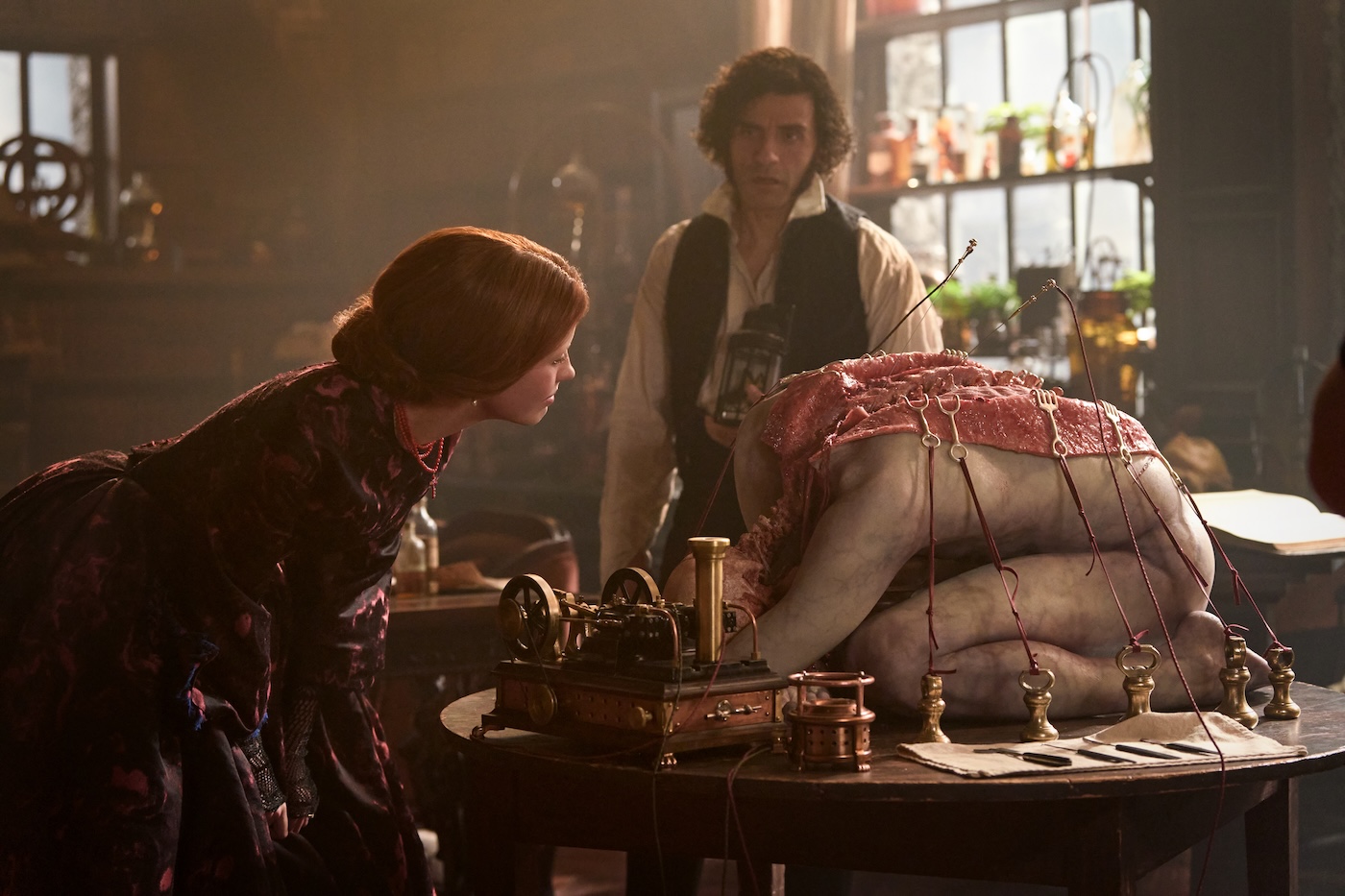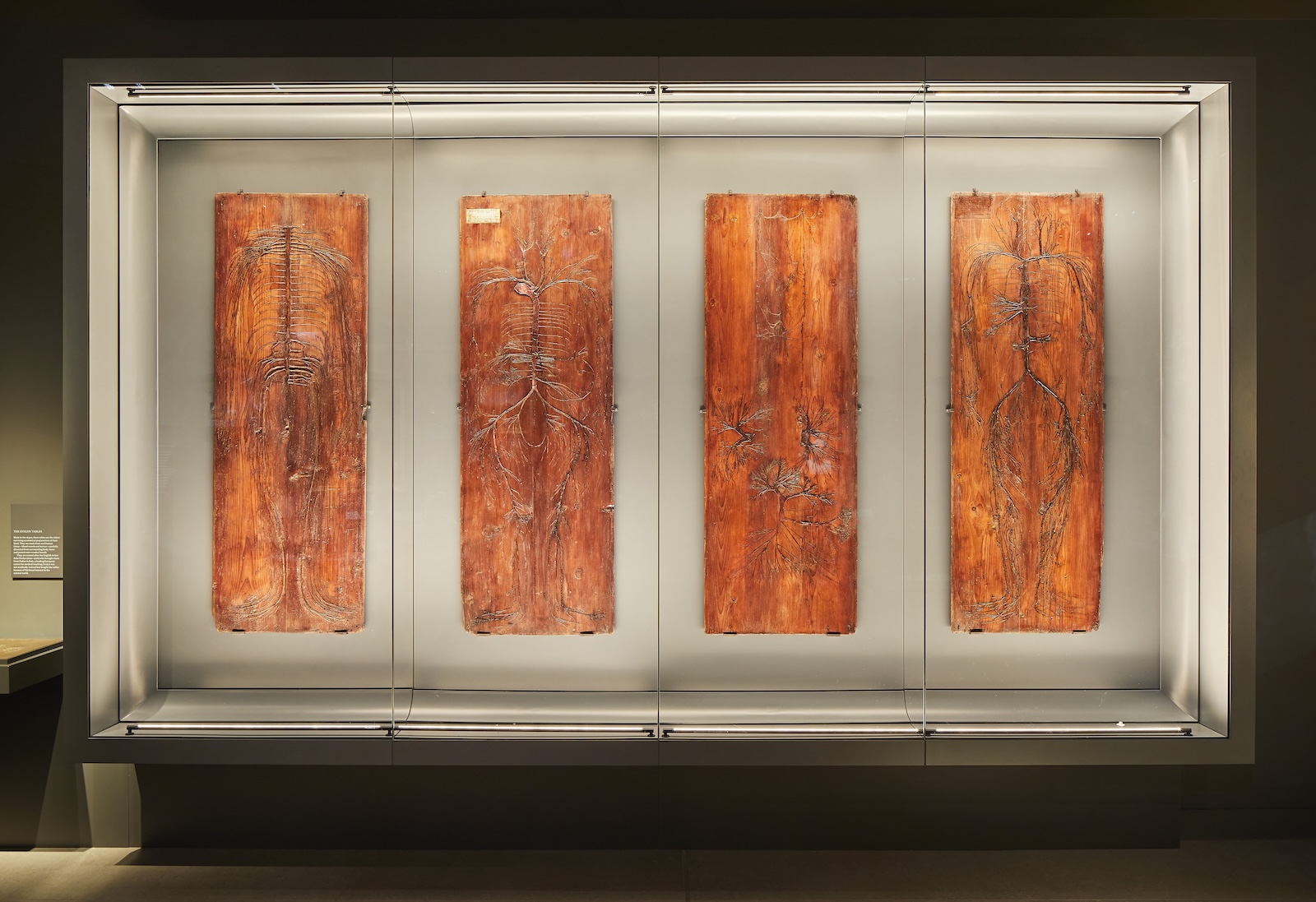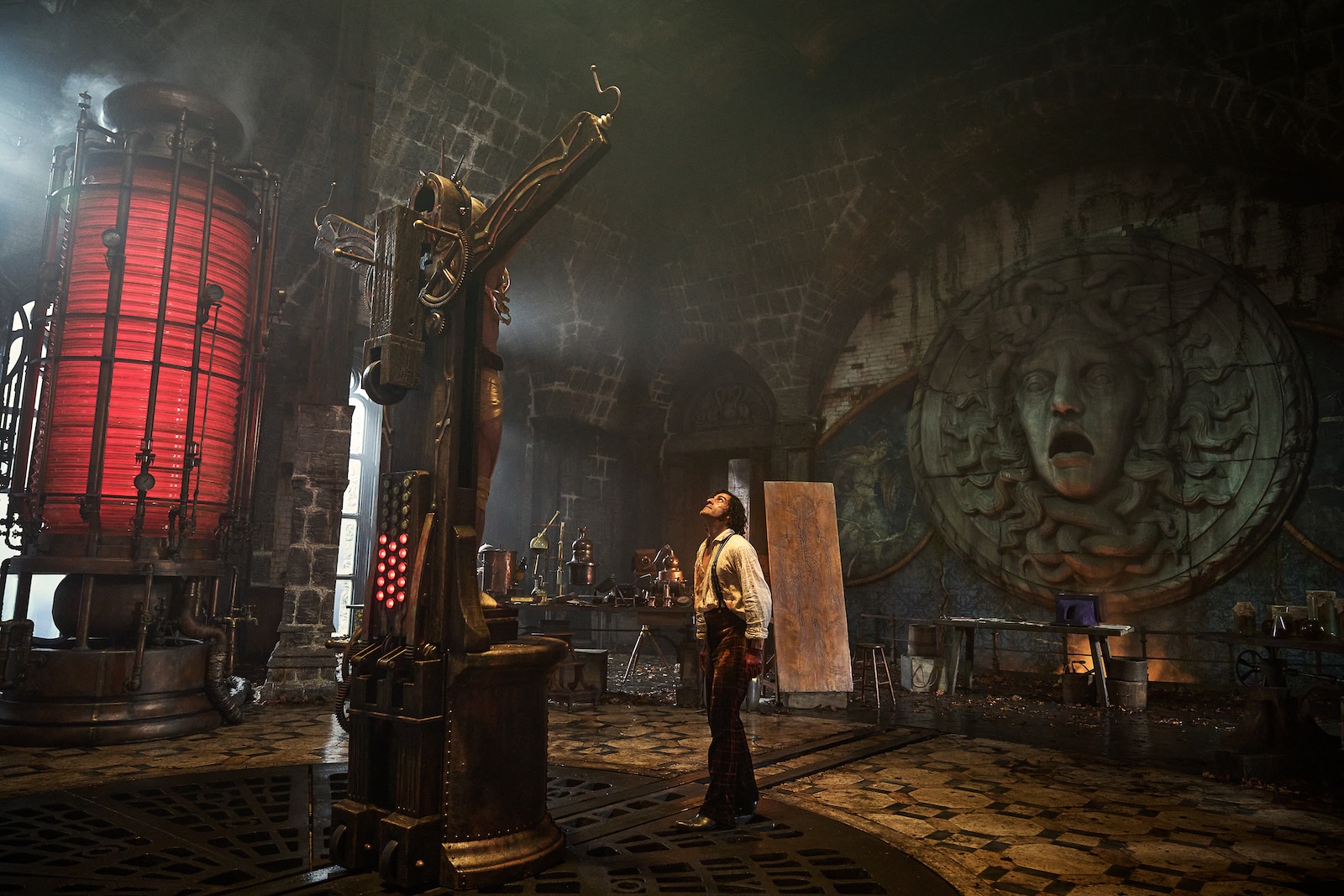400-Year-Old Displays Of Human Tissue Live On In ‘Frankenstein’
The 17th century Evelyn Tables show real human nerves and veins, dried on wooden boards. Designers on the new Netflix film took note.
This is an article from our newsletter “Science Goes To The Movies.” To get a story about the science of popular movies and TV in your inbox every month, subscribe here.
Guillermo del Toro’s new hot monster boy film is a vivid reimagining of the 1818 novel Frankenstein. It’s devoted to the original source material, complete with an opening on an ice-trapped ship and the omission of the often misattributed phrase, “It’s alive!”
The story is well-known for its impact on science fiction, having likely been inspired by real science from its time. This new version shows major attention to detail—accurately depicting the gruesome ways doctors in the Victorian era obtained human specimens, the instruments they used, and the showmanship of public dissections.

In one scene, Dr. Frankenstein looks upon a human lymphatic system, impressively dissected out of a body and splayed on a wooden board the size of a dinner table. The prop, drawn from a set of real anatomical displays called the Evelyn Tables, showcases some of the hidden history that inspired Frankenstein’s 2025 reawakening.
To familiarize themselves with Victorian era medical research, the “Frankenstein” creative team visited archives and museums, including the Hunterian Museum in London, where a large collection of human specimens from around the 18th century are held.
The four Evelyn Tables, now on display at the museum, were made by a German anatomy professor’s assistant in the mid-1600s, and collected by a man named John Evelyn. They were designed to clearly show the structures of human nerves, arteries, and veins, all extracted from human cadavers, dried in positions that resemble how they’re naturally arranged in a living human body, and mounted on a wooden panel.
The first table shows the spinal cord and nerves from the central nervous system; the second shows the aorta and arteries; the third shows the vagus nerves, sympathetic nerves, and veins of the lungs and liver; and the fourth shows the distribution of veins in the human body.
Bruce Simpson, one of the Hunterian Museum’s senior curators, says that they were valuable teaching resources at the time they were created.

“Whilst they look like a diagrammatic representation of some systems of the human body, they are real human anatomical specimens,” Simpson says, suggesting that they may have been a replacement for cadavers during periods when human remains were difficult to access, and to preserve. Tools like the Evelyn Tables “provide a more stable, portable, and permanent way of showing human anatomy to students in classes,” Simpson says.
To create Dr. Frankenstein’s fictional fifth Evelyn table, the film’s artists took a deep research dive into what the human lymphatic system might look like if it were outside the body. Both director Guillermo de Toro and the artists he worked with were invested in using historically accurate practical effects and props so the movie felt tactile and real.
“It’s so organic,” Tamara Deverell, the film’s production designer, says about reimagining an Evelyn table for the film. “We tried to do it in the computer, and I was like, ‘No, no. This has to be hand expressed.’”
Details from the real Evelyn Tables show through in the film, like the pine boards and resins, and the appearance of the tissues themselves. “We used thin threads to make it feel like the threads of the human body, of the connective tissue between the lymph nodes, and we sculpted little new lymph nodes,” Deverell recalls.

The effect of their work—like the real tables—is delightfully creepy. Simpson says that the educational and historical value of the anatomy displays is also worth bringing to a general audience.
“Most people don’t get to see a human nervous system laid out,” he says. “I personally don’t think that knowledge of one’s own anatomy and physiology is something that should be guarded by a small, professional elite.”
Yes. Critics have pointed out that previous versions of “Frankenstein” focus on the story as a cautionary tale about science and ego, but ignore its commentary on parental abandonment and the loss of a child. Besides it being an objectively gorgeous film, del Toro’s version digs deep into those forgotten themes. Also, is it just me or did Jacob Elordi knock it out of the park?
You can stream “Frankenstein” on Netflix.
In this monthly newsletter, explore the surprising science behind the latest blockbusters, hot new shows, and a couple spectacular flops.
Emma Lee Gometz is Science Friday’s Digital Producer of Engagement. They write SciFri’s “Science Goes To The Movies” series and are a journalist and illustrator based in Queens, NY.